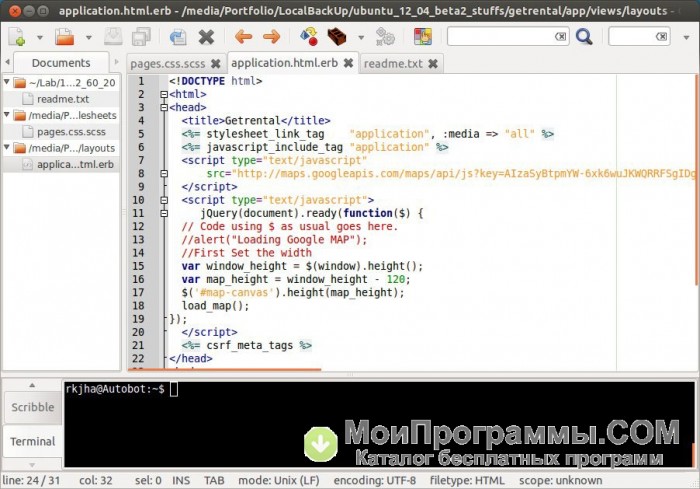

- #Geany install#
- #Geany portable#
- #Geany software#
- #Geany code#
#Geany portable#
Geany Portable for Windows () There is a portable version of Geany by Oliver Krystal to carry on your USB stick and use on any Windows computer. You can search new Geany versions for Ubuntu en launchpad. Find the Geany package in the mentioned BSD variants in devel/geany. In case you need more information you can go to the «Help» menu that the program makes available to the user. When finished we will press "F5" to execute the program.By pressing the "F9" key we will compile and build the executable.The files should be saved in the personal folder.This option will show us a window where we have to enter the missing values.īasic steps to follow to compile and run a program with Geany: It is necessary to access the "Build" menu and access the "Set build commands" option.
#Geany code#
Once the program is installed, we will need to configure several parameters to compile the code written in C and then be able to execute the generated program. Configure Geany to compile the code written in CĪs I have already said, this is a very useful IDE for making C codes, so I am going to leave some basic notes for those who want to test their codes in this program.
#Geany software#
You will only have to go to the Software Center and search for "Geany" in the search engine. Geany is available to be installed without having to type anything in the terminal. If you are one of those users who prefers to use the Software Center, you are going to be in luck. We will only have to look for it in the Dash of our system and start producing. Once the installation process is finished, we will have the program at our disposal.
#Geany install#
Once added, it is time to reload the repositories of our system with:Īt this point, we only need to install the program with this other command: sudo apt install geany geany-plugins To perform this installation you just have to open the Terminal and write the following command in it: sudo add-apt-repository ppa:geany-dev/ppa The first option we have to install this program in Ubuntu is by adding the corresponding PPA.
It shows us the numbering of the lines of the document, for a better search. Allows you to search for fragments of specific texts in all our code. This makes it easier for us to search for texts. Color our code according to the language we are using. It is a lightweight environment with a simple learning curve. As in most editors, the code can be "folded" by sections to have an overview of everything we have written. Something that is always appreciated in an editor is that plugins can be installed to add extra functionalities that help us develop our codes more productively. Being careful is more of a help than a problem. Package geany-plugin-debugger jammy (22.04LTS) (devel): debugger plugin for Geany universe 1.38+dfsg-1: amd64 arm64 armhf ppc64el riscv64 s390x kinetic (. With this functionality, we must be careful as it can lead us to make syntax errors that are difficult to find later. Which is something other editors like Sublime Text 3 it does not do without its corresponding plugin. By default it provides us with the autocomplete function. It allows us to develop codes in different languages such as: C, Java, Pascal, HTML, CSS, PHP and many others. It allows you to manage large projects easily, something that others complicate a bit. 
Next we are going to list some of its main characteristics:
4 Configure Geany to compile the code written in C. 3 Install Geany from the Software Center. Test your setup by running hello.py again. Enter the following in the 'Command' box, paying attention once again to the spaces.Ĭ:\Users\user\AppData\Local\Programs\Python\Python36 "%f" Under 'Execute commands', look for the 'Execute' line. Also, make sure your capitalization matches what you see here exactly.Ĭ:\Users\user\AppData\Local\Programs\Python\Python36 -m py_compile "%f" If you have 'Python 34', with a space between Python and 34, Geany will not be able to run your code. You should have 'C:\Python34\python' followed by a space, and the rest of the command. Enter the following in the 'Command' box. Under 'Python commands', look for the 'Compile' line. Geany's 'make' command will use the make file called 'makefile' by default, so you can simply give your make file that name and all should be well. So use thisĬ:\Users\user\AppData\Local\Programs\Python\Python36 You can use a makefile to serve the same purpose however, you have to make it manually or use an external command that can figure out dependencies. You have to be sure about the path of the python.






 0 kommentar(er)
0 kommentar(er)
